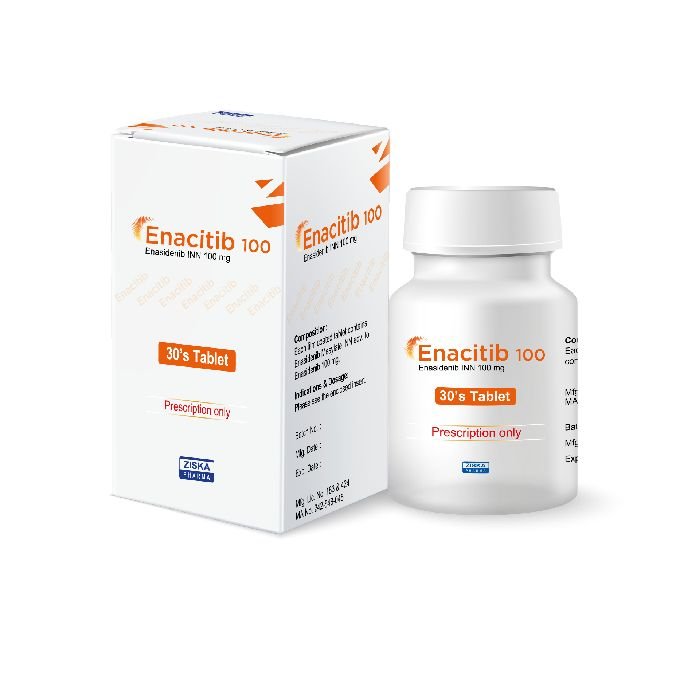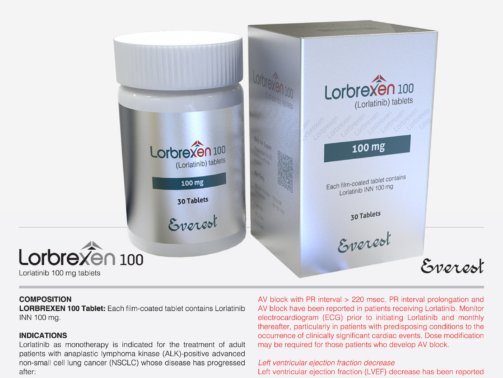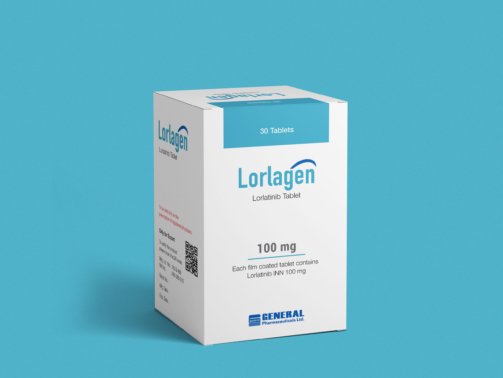Enasidenib100 mg ()
0.00$
Enacitib (Enasidenib) 100 mg is a medication primarily prescribed for the treatment of relapsed or refractory acute myeloid leukemia (AML) in adults with specific genetic mutations. It belongs to a class of drugs known as isocitrate dehydrogenase 2 (IDH2) inhibitors, which target mutated IDH2 enzymes found in certain leukemias. By inhibiting these mutated enzymes, Enacitib helps to restore normal cellular differentiation and reduce the proliferation of leukemia cells, thereby improving outcomes for patients with AML.
Enasidenib, an oral, targeted anticancer drug used to treat specific forms of acute myeloid leukemia (AML), is the active ingredient in Enasidenib 100 mg. It is especially recommended for adult patients with isocitrate dehydrogenase-2 (IDH2) mutations who have relapsed or refractory AML. Enasidenib functions by blocking the IDH2 enzyme, which is essential for the metabolism and growth of cancer cells.
This medication offers a focused treatment for patients whose leukemia contains particular genetic abnormalities, marking a milestone in precision oncology.
Mechanism of Action
Enasidenib is categorized as an inhibitor of IDH2. 2-hydroxyglutarate (2-HG), an oncometabolite that disrupts normal cell differentiation and aids in the development of leukemia, is produced by the aberrant enzyme in patients with IDH2-mutated AML.
By blocking the mutant IDH2 enzyme, Enasidenib lowers 2-HG levels and encourages the transformation of cancerous cells into healthy, mature blood cells. Since this method differs from that of conventional chemotherapy, it is a differentiation therapy that is non-cytotoxic.
Indications and Usage
The following conditions can be treated with 100 mg of Enasidenib:
ADH2 mutations found by an FDA-approved or comparable diagnostic test in adult patients with recurrent or refractory acute myeloid leukemia (AML).
Since it wouldn’t work in AML patients without the IDH2 mutation, it is not meant for usage in those patients.
Dosage and Administration
Enasidenib 100 mg taken orally once daily is the recommended dosage.
Method: Ingestion, either with or without food
Treatment should be continued until the condition worsens or the toxicity becomes intolerable.
Instead of chewing or crushing tablets, it is preferable to drink them whole.
Note: Before starting medication, genetic testing for IDH2 mutations is necessary.
Side Effects
Common Side Effects:
Nausea
Diarrhea
Vomiting
Jaundice
Decreased appetite
Fatigue
Serious Side Effects:
Differentiation Syndrome: A potentially life-threatening condition characterized by fever, shortness of breath, weight gain, peripheral edema, and hypotension. Requires prompt recognition and treatment with corticosteroids and supportive care.
Tumor Lysis Syndrome (TLS): Though rare, TLS can occur and needs to be managed with hydration and monitoring.
Leukocytosis: Increased white blood cell counts, sometimes requiring cytoreductive therapy.
Patients should be monitored regularly for signs of adverse reactions and managed accordingly.
Contraindications and Warnings
Contraindications:
Intolerance to Enasidenib or any of the formulation’s ingredients
Caution & Warnings:
Keep an eye out for Differentiation Syndrome, particularly in the first three months of treatment.
Regularly check liver function because enasidenib can raise bilirubin and liver enzymes.
Patients with a history of liver dysfunction should use this medication with caution.
Drug Interactions
Interactions with Enasidenib may include:
Potent CYP3A4 inducers and inhibitors may change the amount of drugs
Substrates of UGT1A1: Potential for elevated bilirubin levels
Unless clinically warranted, avoid coadministration of medications known to lengthen the QT interval.
For possible interactions, medical professionals should go over the patient’s whole drug list.
Use in Special Populations
Pregnancy: Not advised; could harm the fetus. Throughout treatment and for at least two months following the last dosage, use an effective form of birth control.
Breastfeeding should be avoided both during and for two months following therapy.
Use in Pediatrics: No proven safety or efficacy.
Geriatric Use: Greater monitoring could be necessary, however there is no discernible difference in response when compared to younger persons.
Storage and Handling
Storage: Keep between 20°C and 25°C (68°F and 77°F) at room temperature.
Handling: Wash hands after handling; caregivers should wear gloves if handling broken tablets
Conclusion
For individuals with IDH2 mutations, Enasidenib 100 mg (Enasidenib) provides a focused and novel treatment for relapsed or refractory AML. In contrast to conventional chemotherapy, it acts by reversing the leukemic cells’ differentiation block, which may improve tolerability and provide special therapeutic advantages. As with all cancer treatments, safety and effectiveness depend on careful patient selection and thorough observation.
To be sure the treatment is appropriate based on each patient’s unique clinical and genetic profile, speak with a trained healthcare provider before beginning therapy.
Order Now At Mdx Pharma bd….
To order from MDX Pharma BD, visit their website at https://mdxpharmabd.com, where you can browse products and place orders online. For inquiries or orders via email, contact emedicarepharma@gmail.com. Alternatively, call (+88) 01929123476. Their address is 29, Abdullahpur, Uttara, Dhaka-1230, Bangladesh.
1. What is the purpose of Enacitib (Enasidenib)?
Adults with relapsed or refractory acute myeloid leukemia (AML) who have an IDH2 gene mutation are treated with Enasidenib.
2. Enasidenib: How does it work?
It reduces the synthesis of an oncometabolite termed 2-HG, which can impede normal blood cell formation, by targeting and inhibiting the mutant isocitrate dehydrogenase 2 (IDH2) enzyme.
3. Is it possible to take Enasidenib alongside other drugs?
It might interfere with CYP3A4 inhibitors or inducers; therefore, always disclose to your doctor all of your drugs and supplements.
4. Can women who are nursing or pregnant take Enasidenib?
It may harm the fetus. During treatment and for at least two months after stopping the medication, women of reproductive age should utilize an effective form of contraception.
5. How is the Enasidenib reaction tracked?
through routine bone marrow examinations, blood tests, and observation for indications of adverse effects or the advancement of the illness.
| Generic Name: | Enasidenib |
|---|---|
| Theraputic Category: | Anti-Cancer |
| Pack Size: | 30’s |

 Cart is empty
Cart is empty 



